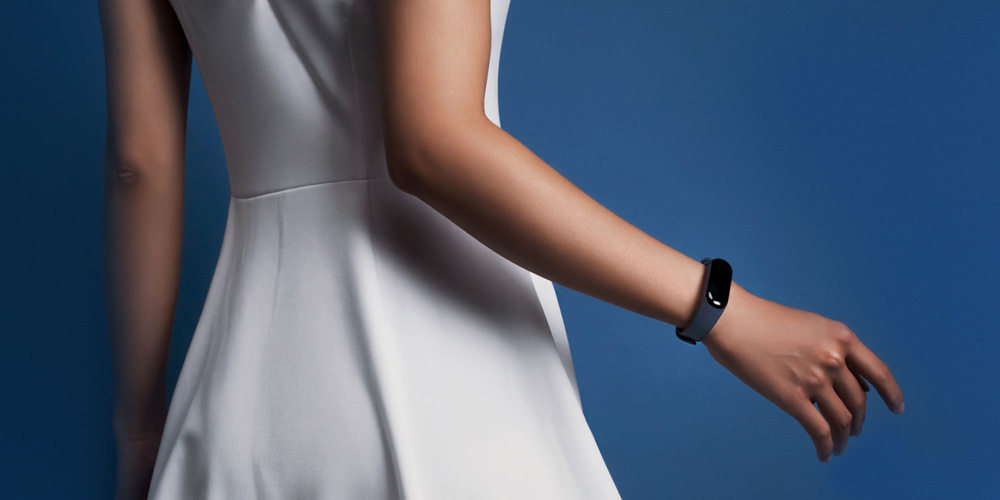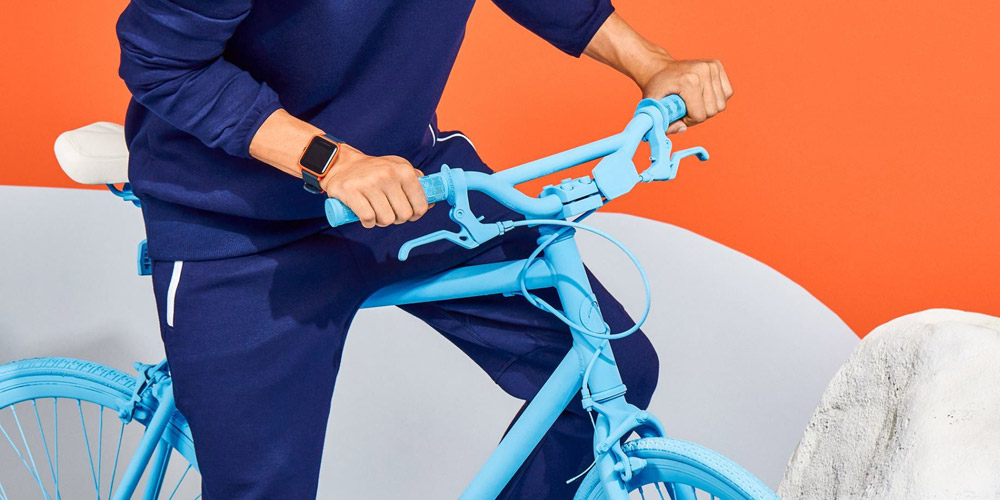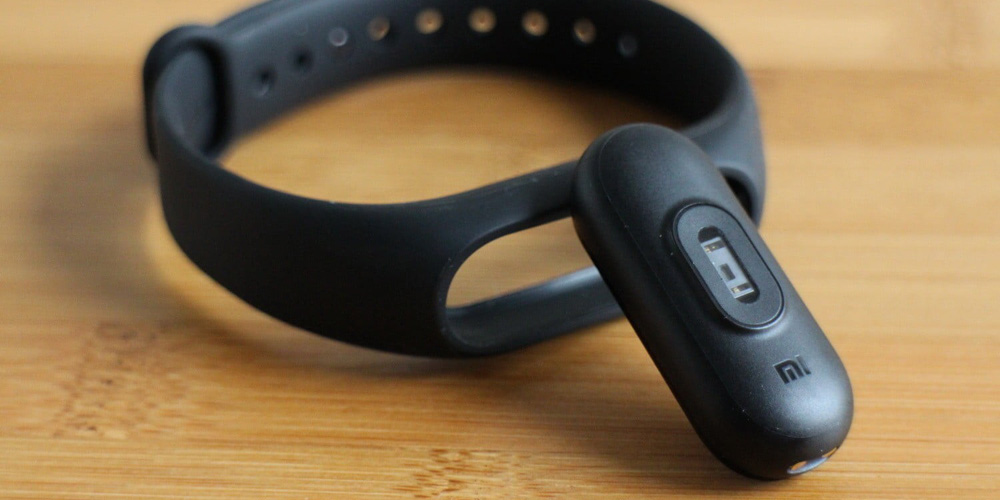
On Thursday, the Chinese company Xiaomi officially unveiled the new fitness bracelet Mi Band 3. It differs from the previous version in the design of the capsule, slightly increased display and support for NFC-payments for Chinese users. With Mi Band 3 you can swim, and the price has remained as low as it was. Another day, another Xiaomi bracelet - will all subsequent fitness trackers really look like each other, like two drops of water? We have pondered the list of features that would not prevent the unreleased Mi Band 4 and Mi Band 5.
 From left to right: Mi Band, Mi Band 2, Mi Band 3
From left to right: Mi Band, Mi Band 2, Mi Band 3GPS
So far, no Xiaomi fitness bracelet has a GPS module. There are still two obstacles to the emergence of such a function: with an additional chip, the device will become more expensive and will work less, because GPS is putting a lot of battery on the GPS.
 Huawei Band 2 Pro
Huawei Band 2 ProMore recently, Huawei began selling a Band 2 Pro bracelet with GPS support. The current prices for it (not starting, but reduced) are in the range of $ 43–60, which is twice the cost of Xiaomi devices (~ $ 20–25), but much cheaper than Fitbit and Garmin smart bracelets ($ 120–150 and $ 120–300). And there are children's watches with GPS, which cost no more than Xiaomi gadgets.
 Huami Amazfit Bip
Huami Amazfit Bip
Startup Huami has developed the first Mi Band, and now made the Amazfit Bip smart watch - a “copy” of the Apple Watch with a 30-day battery. With the GPS module on all the time, the Bip battery discharges quickly. Judging by the reviews, moderately active use of the GPS and heart rate monitor reduces the operating time of the watch to 14–19 days - a reasonable compromise. A couple of years ago, Huami flew out from under the "wing" of Xiaomi and turned into a serious competitor with a wide range of smart watches and bracelets. If Xiaomi wants to seriously fight for users of wearable gadgets, it's time to think about GPS.
Self sufficiency
Wearable devices are experiencing difficult times. There are two reasons: access to the Apple market with popular smart watches, and the lack of understanding by manufacturers of why someone should cling to the pedometer.
Each smartphone is easy to turn into a fitness tracker, but without a heart rate monitor. Turn on Apple Health, install Google Fit, Endomodo, Strava and use almost all of the same features as a simple bracelet. The bracelet needs a smartphone to download data, show graphs and connect to GPS. Someone here is the third extra.

Mi Band stores information about the pulse, the number of steps and the quality of sleep for 10 days. This is not an ideal system. Sports Geek meticulously analyzes his data and regularly synchronizes sports gadgets. Such people take the device more difficult, so that both VO2 are counted, and under water they work, and circuit training is supported. But a simple user buys a bracelet so that the gadget motivates him to lead a healthy lifestyle, rather than forcing him to be distracted by the application. A third of buyers get rid of bracelets after a couple of months. They would like to lose weight and lead a healthy lifestyle, but a tracker addicted to a smartphone does not help them. He must become a self-contained solution. Without "crutches".
Level of body water saturation
Every body needs water! Dehydration increases the chance of stroke, spoils sleep and skin, reduces the efficiency and effectiveness of training. People forget to drink regularly, which means there is a place for a gadget. Topic so-called. "Hydration" was trying to uncover a startup LVL. His engineers have created a tracker that measures the level of water in the blood using infrared light and calculates how much and how often the owner should drink. The gadget did not go on sale. Xiaomi would be worth a closer look at this technology and beat the western competitors.
Bioimpedance
 Aura band
Aura band"Excess" body weight - not the enemy. Enemy - bad habits that form a weak body with excess fat and lack of muscle mass. These imperfections can be recognized using the bioimpedance analysis method, which determines the mass of water, fat, bones and muscles in the body. Devices for bioimpedancemetry look clumsily, like a physiotherapy apparatus; there are still scales with the same function. But the bioimpedance meter bracelet was first made by the startup Aura Devices. The novelty in retail will cost about $ 200, and it’s still far from production - just like the next generation Mi Band. Maybe the Mi Band at number 4 or 5 will be able to tell you how much excess fat you have? I would like to believe.
Improved Mi Fit application
Now the main fitness app Xiaomi is not popular among users, as eloquently indicated by a low rating in Google Play and in the App Store. The main problem is the constant falls and departures. The application functions themselves are few. But the opposite would be better: fewer departures, more analytics and information.
More "Big Data"
Not informativity is a problem not only Xiaomi, but all "amateur" fitness gadgets. All the information they collect and display is of limited benefit to the end user. During the southern exile, Pushkin wrote a report on the locust invasion in Novorossiysk province in the following words: “The locusts flew, flew and sat; sat, sat, ate everything and flew away again. ” Count Vorontsov compared the laconic poem with the “real” reports and realized that they said exactly the same thing. So the standard tracker says: “you walk a little” and “you have not slept well”, adding numbers for solidity. As if the owner of the gadget does not feel that he slept badly and sat in the office for a long time.
 Scales Picooc Mini
Scales Picooc MiniUnique information that encourages the user to a specific action - this is the key to the success of a fitness gadget. Startups Picooc and FocusMotion are engaged in collecting and analyzing such "deep" data. Picooc collects statistics on the composition of users' bodies through its scales and advises how to lose weight in a healthy way, in a particular case, and at a specific point in time. FocusMotion sensors analyze the position of body parts and monitor the technique of performing asanas of yoga, deadlift, squatting - any exercises. Even a simple fitness bracelet should have a couple of trumps on this. Otherwise, the electronic gadget will remain a fashion accessory, not more.
 Focus Motion Sensors
Focus Motion Sensors... And help with finding the capsule, please

The entire electronic content of Xiaomi fitness trackers is in a special capsule. The capsule is in a silicone strap. The strap is on the arm. When the silicone slot is stretched, the capsule pops out. If someone accidentally touches the bracelet during an energetic game of basketball, she also risks falling out. The Mi Band search function is in the Mi Fit application. The capsule makes itself felt with a quiet vibration signal, which is hard to hear on the street. Quite differently, search Bluetooth trackers such as Tile and Chipolo act, which are attached to keys or wallets. They give out their position with a loud tune that you will not confuse with anything. The loss of the Mi Band is almost a rite of initiation into Xiaomi users, but I would like to do without it. This tracker needs a speaker.

